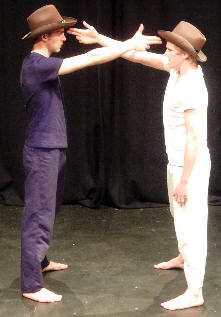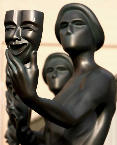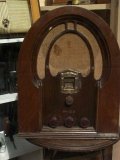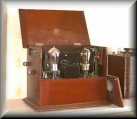Supporting your actors with detailed guided notes on emotions and interpretations
'CHOICES-OBJECTIVE' TECHNIQUE
 ACTORS - you have
MOOD NOTES in the script. These are the PRE-PRODUCTION responsibility
of the PLAYWRIGHT and DIRECTOR. This does not to deny your creativity.
(In stage rehearsals, there is time to explore. RADIO PRODUCTION
is speedy.) ACTORS - you have
MOOD NOTES in the script. These are the PRE-PRODUCTION responsibility
of the PLAYWRIGHT and DIRECTOR. This does not to deny your creativity.
(In stage rehearsals, there is time to explore. RADIO PRODUCTION
is speedy.) |
| ACTORS add to MOOD NOTES and make them their own. |
| EXAMPLES: half-jokingly - beginning to dawn on her - embarrassed and slightly indignant - scared but trying to be strong - building up further to her warning - quickly - she has won the exchange - glad to change the subject - astonished - building up to end of scene and to intrigue the listeners |
| DIRECTOR - use MOOD NOTES to work more speedily. These are only a guide. You have to make clear to actors that this is co-operative work. |
| MOOD NOTES are not fixed. Anything can be changed in PRODUCTION. You are all open to discovery and to creative TEAM work. Open to CHOICES. |
| MOOD NOTE is the suggested OBJECTIVE for the actor. |
| Choices - you discover the different CHOICES for each line and phrase - the final CHOICE becomes the actor's OBJECTIVE |
DIRECTING THE ACTOR - objective, obstacle, subtext, adjustment, choices, objective
| ALAN BECK'S FORMULA FOR THE MAIN CHARACTERS |
| Types of radio plays (fiction and mixed genres) |
| Storyboard - layout of scenes and details - how to make it work for you |
|
|





